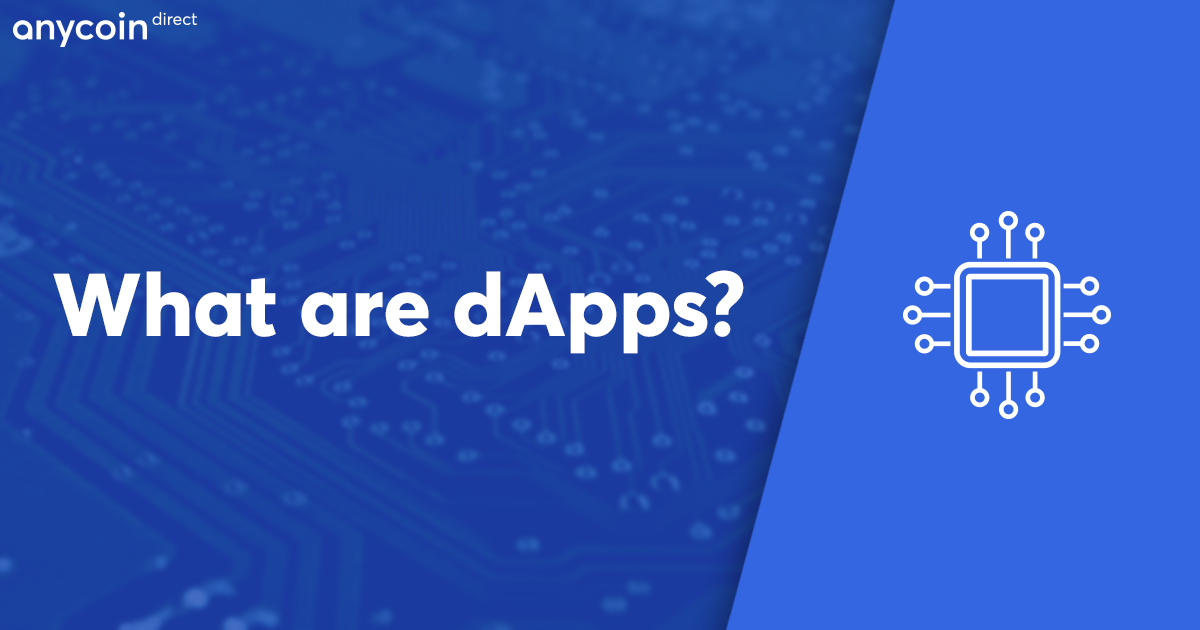What are dApps?
- 5 minute read

In previous Ethereum and Cardano articles, we briefly mentioned the use of Decentralized Applications, commonly known as dApps. But what exactly are these Decentralized Applications and why are they so important for the future of cryptocurrency? Let’s take a look, shall we?

The Four Criteria
So what is a dApp actually? In 2014, a paper called The General Theory of Decentralized Applications, Dapps. The Emerging Wave of Decentralized Applications was published. The paper outlined four simple criteria defining what a dApp is:
- A dApp is completely open-source with no entity owning the majority of the tokens. By means of its open-source nature, changes to the protocol must be decided through consensus of its network-users;
- A dApp’s data must be stored on a decentralized blockchain (for example Ethereum);
- A dApp needs to generate tokens which act as a proof of value (for example Bitcoin);
- These dApp tokens are distributed as rewards on the network.
So essentially, Bitcoin was the first dApp that was made public. It uses an open-source, peer-to-peer blockchain, it generates its own tokens which are ‘mined’ as a reward and makes use of a consensus mechanism via its proof-of-work protocol. Now you might be wondering, how can Bitcoin be a dApp when the majority of dApps are active on the Ethereum network? Well, that’s because there are three types of dApps.
The Three Types
dApps can either have their own blockchain (Bitcoin) or use another dApp’s blockchain (dApps on Ethereum). When you take these two options into consideration, you can classify dApps into the following three categories:
- Type 1 dApp: A Decentralized Application with its own blockchain. The prime example is Bitcoin.
- Type 2 dApp: A Decentralized Application that functions on another (type 1) blockchain. An example is the Omni Protocol which is built on the Bitcoin blockchain.
- Type 3 dApp: A Decentralized Application that functions on a type 2 protocol. An example is the SAFE Network, a decentralized data storage network which is built on the Omni Protocol.
If you are still confused, the following analogy might help a bit: Type 1 is like Windows on your computer. Type 2 would be Word, which functions on Type 1 Microsoft. Type 3 would a grammar plug-in that is integrated or installed on top of Word.
An overview of dApps
Now that we know what dApps are, let’s take a look at the implementation in the crypto sphere. As of today, there are 3,639 type-2 and type-3 dApps. Approximately, 1.710 of those are live where the rest is either in beta, conceptual or has been abandoned. A whopping 2,932 of the total has been deployed on the Ethereum network (type 1). In contrast, EOS has 331 dApps and NEO has 22 dApps running on their respective networks. As for now, Ethereum is still the top dog when it comes to dApp deployment. But for how long though? As we mentioned in our Ethereum series, the Ethereum network is becoming quite congested due to these dApps. While they fight for bandwidth and wait for ETH2.0, competitors are watching the developments closely. It will be interesting to see what the future holds. In a future article, we will take a closer look at the different functionalities and categories that dApps can have.
Read all you need to know in our 'What is Ontology?' info page!


